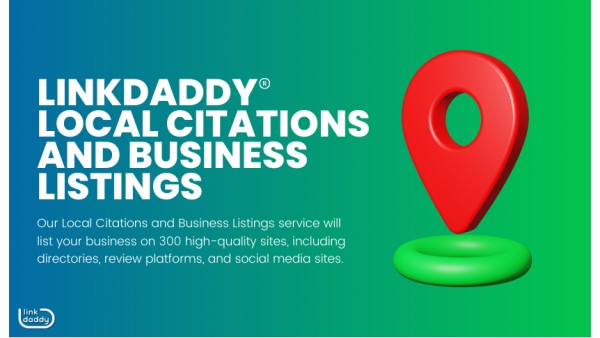LinkDaddy Cloud Services Press Release: Exclusive Announcements
LinkDaddy Cloud Services Press Release: Exclusive Announcements
Blog Article
Comprehending the Different Kinds Of Cloud Solutions and Their Usages
From Infrastructure as a Solution (IaaS) to Software Program as a Service (SaaS), each type of cloud solution serves an one-of-a-kind objective and supplies distinct advantages. By discovering the nuanced capabilities and applications of each cloud service, one can navigate the complexities of cloud computer with precision and insight.
Facilities as a Solution (IaaS)
Framework as a Service (IaaS) supplies customers with virtualized computer resources online on a pay-as-you-go basis. This cloud computer model provides important IT facilities such as online equipments, storage space, and networking without the requirement for organizations to spend in and manage physical web servers and data centers. With IaaS, customers can scale sources up or down based upon their requirements, supplying flexibility and cost-efficiency.
One of the vital advantages of IaaS is its ability to rapidly provision and release facilities components, enabling companies to react promptly to transforming demands and market conditions. By outsourcing facilities monitoring to the provider, companies can focus more on their core organization activities rather than managing the intricacies of equipment upkeep and upgrades.
Furthermore, IaaS provides a high degree of dependability and security, with companies typically offering durable data backup, calamity recuperation, and cybersecurity procedures. This helps make sure that important organization procedures continue to be uninterrupted and data stays shielded against possible hazards. Cloud Services. Generally, Infrastructure as a Solution simplifies IT procedures, improves scalability, and decreases capital investment for companies of all dimensions
Platform as a Solution (PaaS)
Building upon the structure of Framework as a Solution (IaaS), Platform as a Service (PaaS) provides a thorough setting for developers to produce, deploy, and handle applications without the complexities of underlying facilities monitoring. PaaS supplies a system with devices and services that enhance the growth process, enabling developers to concentrate on creating code and structure applications instead of handling infrastructure concerns.

Software as a Service (SaaS)
Software Program as a Service (SaaS) changes the way companies gain access to and utilize software application applications by offering them on a subscription basis via cloud companies. This cloud computer model removes the requirement for companies to set up and keep software application on specific tools, as whatever is organized and handled centrally in the cloud.
SaaS supplies an affordable service for organizations as they just pay for the software application they utilize without the added expenses of hardware maintenance or software program updates. It also supplies scalability, permitting companies to easily adjust their software application requirements based upon their needs.
Furthermore, SaaS applications can be accessed from any type of gadget with an internet connection, promoting cooperation and adaptability amongst remote teams. Security is a top priority in SaaS, with service providers applying durable measures to protect data saved in the cloud.
Popular examples of SaaS include client partnership management (CRM) software application like Salesforce, efficiency devices like Microsoft Workplace 365, and collaboration systems like Google Office. SaaS proceeds to acquire traction in business world as a result of its cost-efficiency, comfort, and scalability.
Function as a Solution (FaaS)
With the advancement of cloud solutions like Software program as a Service (SaaS) simplifying software program shipment, Function as a Solution (FaaS) stands for a standard shift in how code is carried out in a serverless setting. FaaS enables designers to create and implement individual features or pieces of code in feedback to particular events without the need to manage the facilities. This serverless computing design enables designers to concentrate exclusively on creating code to implement particular functionalities, without concerning themselves with the underlying framework or web server management.
Among the vital benefits of FaaS is its ability to range instantly based on the incoming work. Features are carried out in stateless containers that are rotated backwards and Cloud Services forwards as needed, guaranteeing optimum resource usage and cost-effectiveness. FaaS is specifically advantageous for event-driven and microservices designs, where code implementation is activated by events such as HTTP requests or database updates. By abstracting the infrastructure layer, FaaS streamlines development, accelerates time to market, and enhances total dexterity in deploying cloud-native applications.
Storage as a Solution (STaaS)
A fundamental component in cloud computer, Storage space as a Service (STaaS) supplies users with a reliable and scalable solution for taking care of information storage needs. STaaS enables organizations to store and get data from remote servers using the net, getting rid of the demand for on-premises hardware. This service offers flexibility by allowing customers to pay only for the storage they utilize, making it an economical service for companies of all see this dimensions.

STaaS is particularly useful for services with changing storage needs, as it supplies a reputable and safe and secure storage space service without the demand for considerable upfront investments. By leveraging STaaS, organizations can improve their data administration processes, enhance access, and boost information safety in a cost-effective way.

Conclusion
To conclude, recognizing the different kinds of cloud solutions and their uses is crucial for organizations and people wanting to leverage the benefits of cloud computer. Each type of cloud solution provides unique advantages and capabilities, accommodating specific demands and requirements. By using the right cloud solution, companies can boost their effectiveness, scalability, and versatility in managing their IT facilities and applications. It is crucial her latest blog to assess the particular requirements and goals before picking the ideal cloud service for optimum performance.
From Facilities as a Service (IaaS) to Software Application as a Solution (SaaS), each kind of cloud solution offers an one-of-a-kind objective and provides distinct benefits. cloud services press release. By exploring the nuanced performances and applications of each cloud service, one can browse the complexities of cloud computer with precision and foresight
With the evolution of cloud solutions like Software application as a Service (SaaS) improving software delivery, Feature as a Solution (FaaS) represents a standard change in just how code is carried out in a serverless atmosphere.In conclusion, comprehending the various types of cloud solutions and their usages is essential for individuals and companies looking to take advantage of the benefits of cloud computing. By making use of the best cloud solution, organizations can boost their performance, scalability, and adaptability in handling their IT infrastructure and applications.
Report this page